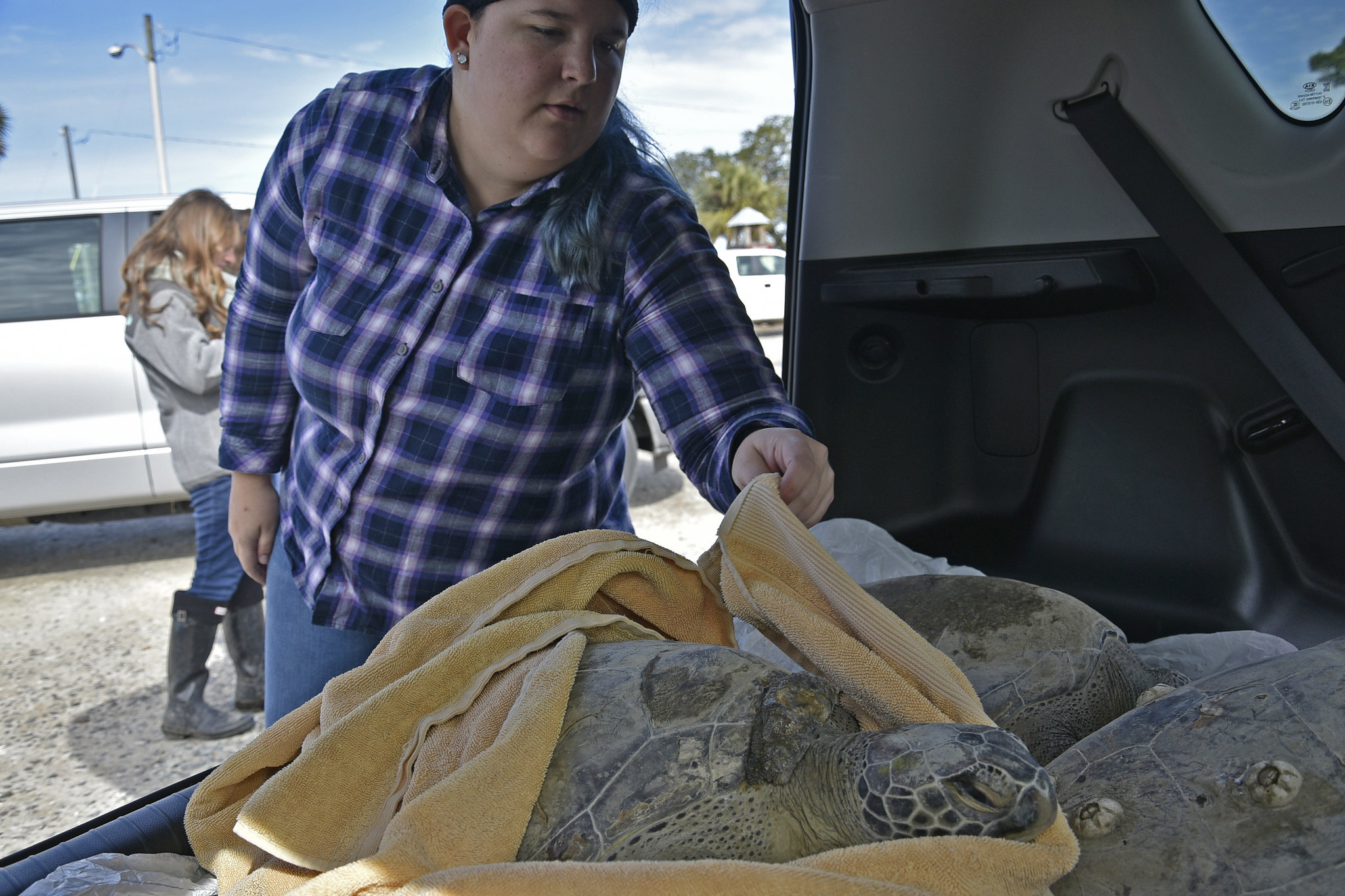We have much more to do and your continued support is needed now more than ever.
What’s Good for Biologists Is Good for Wildlife

Hanging out of airplanes with net launchers. Climbing trees to peer into bird nests. Crawling into bear dens.
Wildlife biologists get to do some pretty cool things. But their envy-invoking jobs serve a serious purpose — to restore and manage the wild species that provide people with so many benefits — food, inspiration, healthy ecosystems, and strong economies.
Yet at a time when fish and wildlife are in crisis, there are not nearly enough biologists and other professionals, with enough resources, to help fish and wildlife weather a mounting medley of threats from an increasingly growing, dispersing, and consuming human population. Today, over one-third of America’s wild species are in decline, with over 1,600 species already listed as threatened or endangered.
If we don’t take action today to support America’s fish and wildlife biologists, more species will face a similar fate.

State biologists and their partners have plans in place that, if enacted, would conserve the more than 12,000 species identified as at risk of extinction in the U.S. Unfortunately, state agencies have never received adequate funding to implement them. Tribal nations face further challenges, with only limited and inconsistent federal funding available to tackle the growing biodiversity crisis.
With your help, we can rewrite this narrative by enacting legislation with a paradigm-shifting impact on the conservation of fish, wildlife, and their habitats.
The Recovering America’s Wildlife Act is on the cusp of being passed by Congress and becoming law — all that is needed is for Congress to include the bill as part of their year-end funding package before closing down for the year.
After years of bipartisan debate and compromise, this finalized bill would empower the major movers in wildlife conservation with the resources to implement plans and programs for saving fish and wildlife across America, here’s how:
- State Wildlife Action Plans are like master plans for recovering all types of troubled wildlife in each state — fish, birds, butterflies, you name it. State wildlife agencies only get about 5% of the funds they need to implement these plans, however. The Recovering America’s Wildlife Act would bump that up to 75%, and states would pick up the rest. This money will complement the funding states already receive to manage animals that are hunted and fished, allowing non-game programs and biologists to flourish alongside other existing priorities.
- The US territories have wildlife action plans too, and Puerto Rico, Guam, American Samoa, and the Northern Mariana and US Virgin Islands would share in this funding, so they can better manage the amazing but often imperiled abundance of biodiversity on these islands.
- Tribal nations use a mix of plans, programs, and projects to meet their many wildlife management commitments, and have been highly effective despite no real or reliable financial support. Tribes only requested a modest amount of funding compared to their needs, but it would be the first sizable, and reliable support for tribal wildlife programs, allowing them to better provide the healthy wildlife and ecosystems their members depend on.
- The US Fish and Wildlife Service is charged with writing and implementing a plan for each endangered and threatened species, but the agency doesn’t get nearly enough funding from Congress. This bill can help put recovery back on track with four years of funding for recovery plans and other popular programs benefiting endangered species and private landowners.
One of the most important aspects of this bill is that it brings so many professionals, politicians, and the public together to support wildlife. The bill itself has strong support from Republicans and Democrats, businesses, religious entities, and the full spectrum of hunting, fishing, and environmental groups. After it passes, federal funds will help states manage more of the nation’s wildlife in trust for the US public. States, territories, and tribes will help federal agencies, and themselves, recover and delist endangered species, with at least 15% of their share committed to that cause.
Where the US has invested resources in wildlife and wildlife professionals, the results have been impressive. Wildlife that are hunted and fished have largely rebounded from historic lows thanks to consistent funding from licenses and special taxes paid by hunters, anglers, and recreational shooters – waterfowl, deer, turkeys, and bass are prime examples. And when states and tribes have been able to use the limited resources at their disposal to focus on the diversity of species they are tasked with managing, recovery has followed.

From the California Condor to the North American River Otter, we know that proactive, stakeholder-driven conservation of at-risk species can result in conservation success. Through passage of the Recovering America’s Wildlife Act, we can do the same for all of the other wildlife that needs our help. Here’s what you can do today:
- Look up your members’ phone numbers using the Find Your Member feature on congress.gov and voice your support for the bill using TWS’ Recovering phone call script. Log your calls to offices with TWS staff using this form.
- Write messages of support for the Recovering America’s Wildlife Act to your members of Congress here.
- Share your support for the legislation on social media using TWS’ Recovering America’s Wildlife Act social media templates. Be sure to use #RecoverWildlife so we can follow your engagement!
- Find more information on the NWF and TWS websites.
The Wildlife Society and the National Wildlife Federation were created at the exact same moment in 1936 to help conserve wildlife and their habitats at a moment of crisis. We are united in this cause, but we can’t do it without your help.
Yours in Conservation,
Collin O’Mara, President and CEO
National Wildlife Federation
Ed Arnett, CEO
The Wildlife Society




















